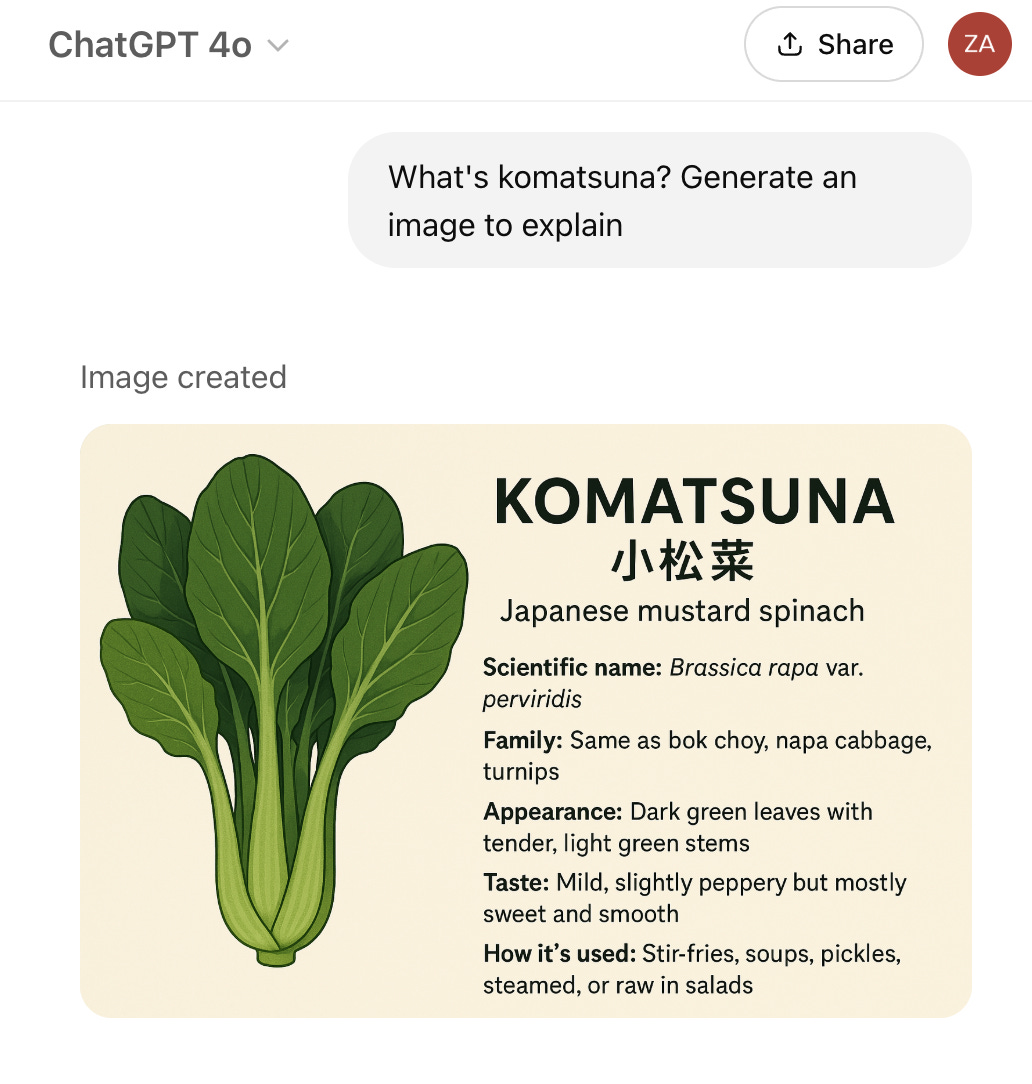Why GPT-4o's image generation is a game-changer for education
A picture is worth a thousand words
For adults today, “learning” has become synonymous with “content consumption”. The moment we step off the graduation stage, our education continues through a steady diet of YouTube videos, blog posts, books, and podcasts—these become our classrooms without walls.
In this world, the quality of content isn't just important—it's decisive. When learning anything, content is king. The thin line between persisting with learning and abandoning it often hinges on a simple question: Does the material captivate us enough to overcome our natural resistance to effort?
When I witnessed OpenAI's GPT-4o image generation capabilities yesterday, something clicked. Here, finally, was multi-modal technology ready to transform not just how we consume information, but how we learn. This breakthrough opens a door to something extraordinary: AI-generated learning materials tailored not just to what we need to learn, but to how we learn best.
Until now, conversations about AI in education have largely centered on text-based interactions. Confused about quantum entanglement? Ask ChatGPT, and it delivers an explanation a child could grasp. Yet this approach has always bumped against a fundamental limitation of human understanding.
Some concepts simply defy text-based explanation. There's wisdom in the adage that “a picture is worth a thousand words”.
I experienced this firsthand while traveling in Japan, repeatedly encountering a vegetable called "komatsuna" on menus. When I asked ChatGPT what it was, I received an impressively detailed botanical description—a leafy Brassicaceae relative with nutritional properties similar to spinach.
Technically accurate, intellectually interesting, and utterly useless for my immediate need to know what would arrive on my plate.
But when I asked the same question with a request for an image, the fog cleared instantly. One picture conveyed what paragraphs of text couldn't—I immediately recognized the vegetable and understood what I would be eating.
This simple example illuminates something profound about human cognition. What if AI could generate not just static images but dynamic videos to explain complex concepts? What if it could adapt its teaching method to align perfectly with your unique learning style?
Previous AI models offered personalization of content, but they failed to personalize the format. Yet we know intuitively that we all absorb information differently. Some like to read, others need to hear them explained aloud, while many prefer visual representation or demonstration.
Consider the possibilities: A student with a passion for anime could instruct AI to "explain everything using anime style," allowing them to learn the theory of relativity through a medium that resonates emotionally (OpenAI actually demonstrated this use case during the launch, showcased below).
This isn't just theoretical speculation. Users are already generating high-quality educational visuals with GPT-4o:
A visual infographics that explain why San Francisco is so foggy
A comic series for children explaining the life of immune cells, generated by a professor of immunology (source)
An educational poster about different whale species
Perhaps the most telling aspect of OpenAI's release is their approach to integration. Rather than offering image generation as a separate tool, they've woven it seamlessly into GPT-4o. As the feature's lead developer explained, "We don't break up image generation and text generation. We want it all to be done together."
In the near future, when you ask AI a question, it will be able to mingle text and in-line images seamlessly. It will also intelligently determine the optimal response format—whether that's text, images, a combination of both, or even a short video—and deliver a multi-media answer that matches how you learn best.
Imagine asking AI, "How do large language models work?" and instead of a text explanation, receiving five engaging, information-rich short videos that break down the concept visually. Or perhaps you could upload a dry textbook and have AI transform it into a captivating comic book? Or submit an academic paper and receive an explanatory video in the style of Andrej Karpathy?
The ultimate promise is breathtaking in its simplicity and profound in its implications: truly personalized education. Learning anything, in exactly the way that works for you.










Hey Zara, I'm a senior data analyst and wanted to share my experience with this too- although it's not education-related. GPT-4o now can generate me graphs with clear color-code to indicate whether the KPIs are doing good/bad. This is so much convenient for data analysts to communicate business/product insights and drive strategic decisions effectively
I happen to be a TOEFL teacher, I've used ChatGPT to generate comic-style illustrations to help students grasp abstract concepts in reading sections, such as volcanic eruptions on Mars. It works very well:)